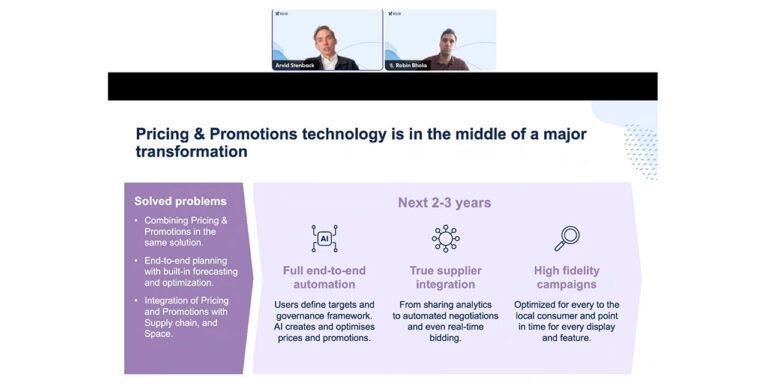Both merchandising and inventory planning teams play critical roles in any markdown process. Merchants must balance the overall profitability for their categories, and to do so they commonly use top-down financial forecasts—inclusive of clearance budgets—to control key business decisions, including markdowns. Inventory teams execute against those budgets as efficiently and effectively as possible, leveraging more detailed, bottom-up demand forecasts. It’s often said that merchandising and inventory planning represent the art and science of retail, respectively. Merchandising decisions can often be based on an individual merchant’s own experience and strategy, while inventory planners use the wealth of information in demand forecasts to guide more data-driven decisions.
Rather than bringing these different talents and approaches together, merchants and inventory planners too often work in silos, often even using different data sets. The two teams share similar goals—driving sales while maximizing margin and minimizing costs—but those goals are difficult to achieve in a silo. The impact of weak collaboration is compounded in the case of markdowns, which start from a point of “already losing margin,” then add the pressure of strict termination deadlines.
Fortunately, the right technology strategy can facilitate a collaborative relationship that drives significant outcome improvements for markdown campaigns.
One system, one truth
Merchants and inventory planners often work off separate forecasts—the former focused on a more strategic, holistic view of the company and the latter on bottom-up planning. When working separately, it’s hard to create cohesive, aligned plans, but a shared system eliminates the confusion that arises from working off different information or data. With a tool that uses the same bottom-up forecast aggregated to a higher level, merchandising and inventory teams can build plans based on near real-time data that provides one single vision of the “truth,” ensuring everyone is on the same page.
This eliminates common pain points we see in markdowns and improves cross-team communication. Merchandising and inventory teams often have to waste time performing tactical tasks—going back and forth on spreadsheets, aligning separate forecasts or picking one from between two systems, manually calculating clearance discounts, and coming to an agreement on final plans. However, a single system using a unified, integrated forecast can automate these tasks and eliminate situations in which teams are working from “multiple versions of the truth.” It also eliminates the need for the rudimentary sharing of information and markdown/margin calculations.
Instead, cross-functional conversations can focus on sharing insights to improve overall performance—for example, discussions about which products respond most heavily to markdowns, which categories have the highest and lowest price elasticities, which types of products have underperformed, and so on. Together, merchandisers and inventory planners can identify a truly strategic point of view on where it makes sense to take markdowns and how to improve the inventory plans to reduce hits on margin in the future.
How collaboration drives better markdown outcomes
Another risk when sharing plans manually, as many retailers do, is the potential for human error—especially in an industry that experiences constant change. Merchants often have to react to changes in the market quickly with unavoidable markdowns, which can result in short planning times and highly over-inventoried items. If one person accidentally leaves an email in their drafts folder, the inventory planning team can be left with an even smaller window of time to exit product, further amplifying an already significant loss on margin.
RELEX’s customers have found consistency, transparency, and long-term visibility to be among the most valuable benefits gained through our markdown optimization solution. By giving demand planners direct access to merchants’ termination dates, a unified system prevents scenarios where they have to prioritize clearing stock over margin.
Merchants often send inventory teams very broad markdown requests — for example, a blanket, product-level markdown of 50% at all stores. Using a unified system, demand planners have time to localize and optimize these broad recommendations, which are initially planned at the network-level. With adequate planning time, demand planners can fully leverage their granular data analysis and price elasticity modeling to push markdown products through the supply chain at the optimal price and timing to earn the highest margin possible for each location in their network.
A best-in-class system will also provide monitoring and analysis dashboards that help both inventory and merchandising teams glean insights from past performance to continuously improve future plans. RELEX’s customers have seen impressive results, including a 133% increase in markdown turnover, 15-20% lower-end stock, 94% higher sales than projected without markdown, and 4.9% margin growth. When siloed teams or disconnected solutions come together in a unified system, retailers also bring together the art and science of retail planning, ensuring everyone is working together to drive sales, maximize margin, and reduce costs as efficiently as possible.




